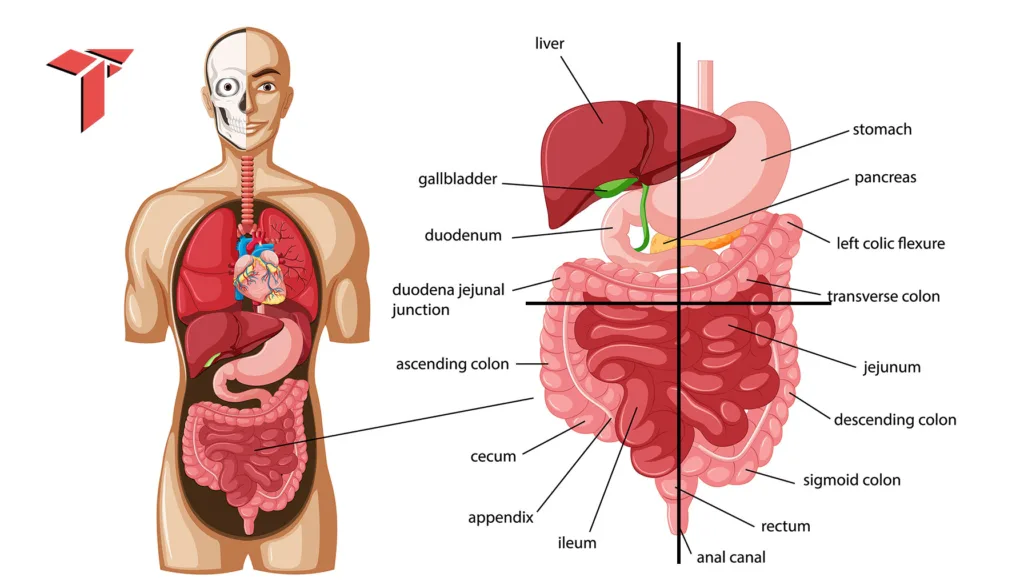Hey there, ever found yourself lying in bed, clutching your abdomen, thinking, “Hmm, this doesn’t feel right?” We’ve all been there—whether it’s indigestion from last night’s double pepperoni pizza or something more serious. But how do you differentiate between a benign ache and a signal that your body is trying to tell you something important? That’s where self-examining your abdominal quadrants at home comes into play.
Why is it important, you ask?
Knowing your body, especially what’s going on in your abdomen, can be a lifesaver—literally. It enables you to catch potential issues early on and communicate more effectively with healthcare professionals. So, are you ready to play a more active role in your health? Let’s dig in!
Why Should You Self-Examine Your Abdominal Quadrants?
Okay, let’s get down to brass tacks. You might be thinking, “Why bother poking and prodding myself when I can just go to a doctor?” Good point! But hey, sometimes Dr. Google isn’t the most reliable source, and waiting for a doc’s appointment can be a drag. Plus, who wouldn’t want to be their own health hero?
Early Detection of Issues
First off, early detection is key! By routinely checking your abdomen, you give yourself a chance to catch issues before they escalate. Think of it as your abdomen’s “early warning system.” Convenient, isn’t it?
Better Communication with Healthcare Professionals
So, you’ve found something unusual. What’s next? Now you’ve got ammo for a more productive chat with your healthcare provider. Knowledge is power, folks! The more you know about your body, the easier it is to articulate your concerns.
Personal Health Awareness
Last but not least, self-examination boosts your own health awareness. It’s like getting to know your car better; you start to understand when it’s purring like a kitten or growling like a hungry lion. Are you starting to see the perks?
A Quick Overview of the Abdominal Quadrants

Before you start prodding and poking, it’s crucial to know what you’re looking for. Your abdomen isn’t just one big, undefined space; it’s divided into four quadrants, each with its own set of organs and potential issues. Think of it as a treasure map, but the “X” marks could be something you either hope to find or desperately wish to avoid. Ready to be the Indiana Jones of your own body?
Right Upper Quadrant (RUQ)
Welcome to the upper-right corner of your torso, folks! This is where your liver, gallbladder, and parts of your intestines hang out. Issues here might signal problems like gallstones or liver issues. Pay attention to this quadrant, especially if you’re a fan of fried foods or have a family history of liver issues.
Left Upper Quadrant (LUQ)
On the opposite corner, you’ve got your stomach, spleen, and more of those intestines. Feel discomfort here? It could be anything from gastritis to spleen issues. Don’t take pains in this area lightly!
Right Lower Quadrant (RLQ)
Slide down to the lower-right area, and you’ll find—drumroll please—your appendix! Ever heard of appendicitis? Yep, if something’s wrong in this quadrant, you might be due for a little surgical intervention. Don’t ignore sharp pains here; they might be telling you something urgent.
Left Lower Quadrant (LLQ)
Last but not least, we’ve got the LLQ, home to the final stretches of your intestines and, for some, reproductive organs. Issues in this quadrant could range from gastrointestinal to reproductive. Are you keeping tabs on the lower left? You should be.
Tools You’ll Need
So, you’re fired up to get to know your abdominal quadrants better. That’s the spirit! But before you dive in, you’ll need a few things. Don’t worry; we’re not talking about a scalpel or an MRI machine. Just some basic stuff to set the stage for your homegrown checkup.
Clean Hands
First thing’s first: wash those hands! You don’t want to be transferring any germs while you’re on this abdominal adventure. A good scrub with soap for at least 20 seconds should do the trick. Got it?
A Mirror
Ah, the mirror—a tool of vanity turned into a tool of health! Having a mirror helps you ensure you’re hitting the right spots and using the correct technique. Who knew that the mirror could be more than just a selfie assistant, right?
Adequate Lighting
Good lighting is not just for your Instagram photos; it’s crucial for a proper self-exam. You don’t want to miss any discoloration or visible abnormalities, do you? Bright enough to see, but not too bright that you need sunglasses. Find that sweet spot!
Step-by-Step Guide to Self-Examination
Ready to get hands-on? You’ve got your tools, you know your quadrants, and you’re hyped to be your own health detective. So, what’s next? Hold your horses; we’re about to break it down for you.
Preparing for the Self-Exam
Before you start, make sure you’re in a comfortable and private space. Relaxed and ready? Great! Let’s get started.
The Examination Process
How to Examine RUQ
- Use your right hand’s fingertips and gently press around the upper right area of your abdomen.
- Feel for any hard masses or tenderness. Make mental notes.
- Move in a circular motion, covering the entire quadrant.
Easy peasy, right?
How to Examine LUQ
- Same as RUQ, but this time focus on the upper left area using your left hand.
- Be gentle, and take note of any abnormal feelings or hardness.
- Complete the quadrant by moving your fingertips in a circular motion.
Getting the hang of it?
How to Examine RLQ
- Now switch to your lower right abdomen. Use your right hand again.
- Press gently, especially if you’re already feeling some discomfort.
- Make circular motions to cover the entire quadrant.
Still with me?
How to Examine LLQ
- Last stop, the lower left corner! Use your left hand’s fingertips this time.
- Go easy, remember, this is an exam, not a wrestling match with your gut!
- Finish off with circular motions.
Phew, all done!
Post-Examination: What to Do Next?
Once you’re done, sit back and reflect. Did you feel anything odd? Any quadrant yelling out for attention? Now’s the time to jot down your observations. It might come in handy during your next doctor’s visit.
Common Challenges and Solutions
Alright, let’s be real for a second. Even though you’re amped to be your own abdominal sleuth, you’re likely to hit some bumps on the road. But hey, bumps make the journey memorable, right? 🤔
Feeling Nervous or Anxious
It’s totally okay to feel a bit jittery. You’re exploring uncharted territory, after all. But guess what? The more you do it, the less daunting it becomes. Consider doing some deep breathing before diving in.
Inconclusive Results
“So, I poked around but didn’t find much. What now?” Great question! An inconclusive result is not a failed mission; it’s a starting point. Remember, you’re not a healthcare professional. If in doubt, consult one!
Physical Discomfort
Finding it uncomfortable to press certain areas? That’s your body’s way of saying, “Hey, be gentle!” Adjust your pressure, and if discomfort persists, it might be time for a professional opinion. Got it?
Nobody said playing doctor would be a walk in the park. But these challenges? Totally surmountable!
Be Your Own Health Advocate
So, you’ve made it to the end—high five! 🙌 You now know why it’s important to regularly self-examine your abdominal quadrants, what tools you’ll need, how to actually do it, and how to tackle any challenges that come your way. How empowering is that?
Final Words
Sure, you might not get it perfect the first time, and that’s A-OK! The point is, you’re taking a proactive role in your health, and that’s something to be proud of. Remember, early detection can make all the difference, and knowing your body well can be one of your greatest assets. So, are you ready to be the hero of your own health journey?
Go ahead and share your experiences, challenges, or questions in the comments below. Let’s build a community of abdominal detectives, shall we?




